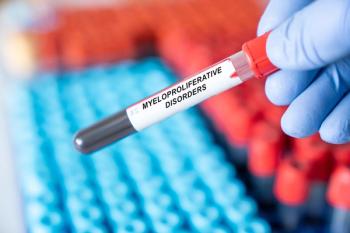
Potential Link Found Between 3 Biomarkers, DKD Risk in Pediatric T1D
A study found cystatin C, renal resistance index, and urinary kidney injury molecule-1 were significantly associated with risk of diabetic kidney disease (DKD) in children and adolescents with type 1 diabetes (T1D).
Cystatin C, renal resistance index, and urinary kidney injury molecule-1 (KIM-1) may all be associated with the risk for diabetic kidney disease (DKD) in children and adolescents with
Approximately 1 in 5 patients develops DKD—the primary cause of end-stage renal disease among patients with T1D—20 to 30 years after receiving a T1D diagnosis, making it more important to detect risk as early as possible.
Persistent microalbuminuria and reduced estimated glomerular filtration rate (eGFR) are both contemporary methods of early detection for DKD.
Seventy-five children and adolescents aged 10 to 18 years (36 girls and 39 boys) were enrolled in the study to determine if cystatin C, renal resistance index, and urinary KIM-1 were associated with estimated DKD risk. The median (IQR) age was 14 (11-16) years, and the median T1D duration was 6 (4-9) years. Most (74.7%) patients experienced T1D onset before puberty.
The authors used the Multiple Indicators Multiple Causes (MIMIC) Model to conduct the main analysis, combining the confirmatory factor and path analyses. They found the biomarkers were significantly associated with estimated DKD risk in children and adolescents.
However, this finding is only to the extent that risk is validly indicated by 8 standard predictors:
- eGFR
- Urinary albumin
- Serum creatinine
- Duration of T1D
- Hemoglobin A1C
- Higher blood pressure percentile (systolic or diastolic)
- Age
- Body mass index
Raw path coefficients for each focal predictor (FP) were as follows:
- Cystatin C: 3.16 (95% CI, 0.78-5.53; P = .009; false discovery rate [FDR] < 5%)
- Renal resistance index: –8.14 (95% CI, –15.36 to –0.92; P = .027; FDR < 5%)
- Urinary KIM-1: 0.47 (95% CI, 0.02-0.93; P = .040; FDR < 5%)
Additionally, increases in cystatin C and urinary KIM-1 resulted in increased values of the latent variables indicating risk by 0.35 and 0.26 standard deviations, respectively. Meanwhile, an increase in the renal resistance index was linked to a decrease in the value of the latent variable of –0.28 standard deviations.
When the indicator of the latent criterion was switched from age to puberty stage, all 3 FPs were still significantly associated with the latent variable.
“Although we have no empirical and rational reason to believe that the association of the 3 new FPx with the latent factor measured by different standard DKD predictors differs between different countries, regions, and children or adolescents treated in different types of institutions, such a possibility should not be overlooked,” the authors wrote. “We could not assume with the least reliable certainty whether the unicentric nature of our study design worked in favor of or against the null hypothesis or how large the weakness of generalizability that may have caused it could be.”
They encouraged additional prospective cohort studies to test these findings.
Reference
Trutin I, Bajic Z, Turudic D, Cvitkovic-Roic A, Milosevic D. Cystatin C, renal resistance index, and kidney injury molecule-1 are potential early predictors of diabetic kidney disease in children with type 1 diabetes. Front Pediatr. Published online July 29, 2022. doi:10.3389/fped.2022.962048
Newsletter
Stay ahead of policy, cost, and value—subscribe to AJMC for expert insights at the intersection of clinical care and health economics.













































